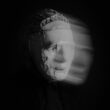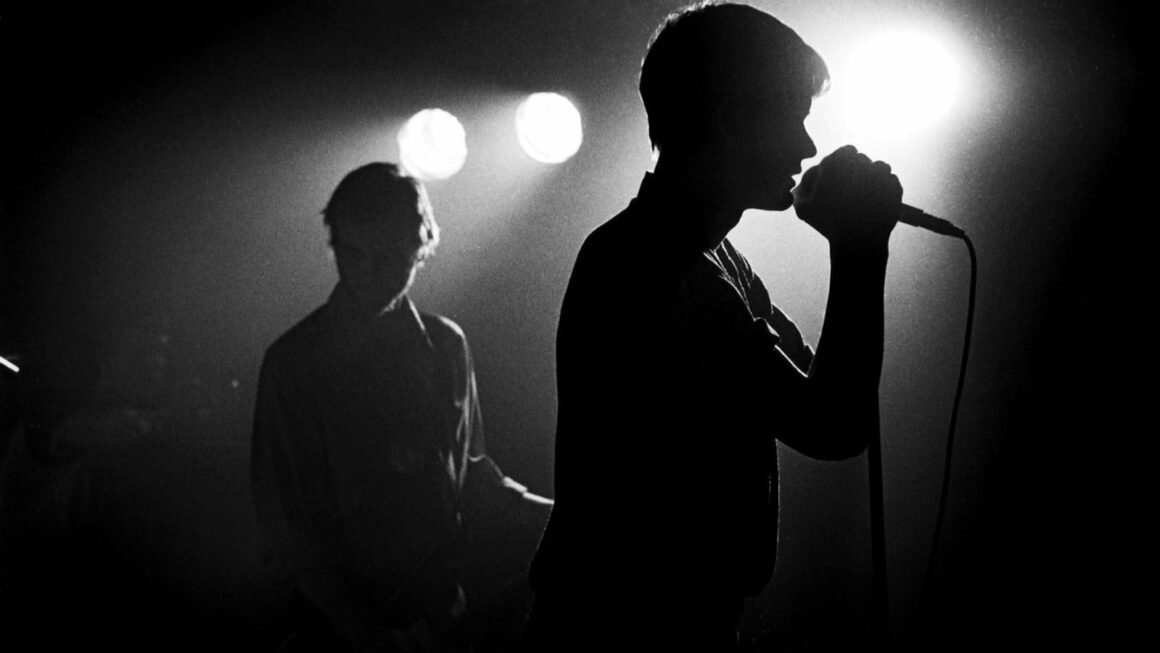
The Brilliance Of Ian Curtis & Martin Hannett
How two distinctive characters impacted Joy Division’s 1979 masterpiece Unknown Pleasures in their very own way.
Within the process of making any album, there is a fine interchange between the producer and the creative minds behind the music. All too often, producers can force their ideas onto the artist. Whilst this does have creative benefits occasionally – such as in the case of Butch Vig and Kurt Cobain, where Cobain was reluctant to use double tracking but Vig wanted to push forward to his ultimate goal of creating a heavier, more punk-inspired wall of sound – it can also prevent the rawness of the artistic intention coming through.
In some ways, the control producers have over artists in terms of being essential to the final mastering process and release of an album, means that much of the original creative intention can get lost. Unknown Pleasures, however, managed to perfectly blend intricate and ground-breaking production with the best of digital FX and technology of the era, whilst still allowing the original guitar work to shine through. The end result was something very different from the sonic atmosphere created when Ian Curtis performed live. In fact, Joy Division started off more orientated towards the punk scene proper that called for loud guitars and raw expression of emotion as opposed to the technical and atmospheric production which Hannett eventually added to the record.
Hannett himself was the quintessential rock and roll type – capricious, single-minded, determined and extremely technical in terms of the levels of detail he was aiming for in his work. It’s no surprise that this clashed with Ian Curtis’ need to look at things from a more emotional perspective. Fulfilling almost every expectation of a genius producer, including copious amounts of alcohol as well as the eccentricities which are expected of any kind of musical mastermind, Hannett was certainly a difficult character to work with. A memorable moment involved him hearing an issue with the drum set and ordering for it to be fully taken apart and put back together again, only to find that there was nothing wrong with it at all. His behaviour may have raised a few eyebrows amongst band members, but nevertheless, it was this thoroughness which meant that he could produce the album is such a ground-breaking way.
“He was snorting coke off the There Is No One Quite Like Grandma gold disc.”
Ian Brown
Evidence of this rigorous, detail orientated, yet flexible personality is clear within the recording. The sheer differences between Joy Division’s live performance and their playing on the album show just how much of a difference production can make. Furthermore, listeners are also able to refine and separate what is clearly the work of Curtis and Co. and what the final touches of Martin Hannett were. Unknown Pleasures in its recorded state is a lot more lush and atmospheric, channelling the gothic atmosphere of the era and taking the band’s punk influences to a level where the intensity of the genre blended seamlessly with the rich and dark emotions of new wave music.
One of the most significant questions arising when listening to the album is how Martin Hannett’s involvement changes it with respect to Ian Curtis’ original creative intentions. It is in fact hard to classify music as so much is dependent on personal taste. Furthermore, we do not really have a way of getting inside the head of an enigmatic character like Ian Curtis. The aim of a producer is, in some ways, to create atmosphere out of the raw materials of melody and lyrics. As a matter of fact, there is indeed an incredible amount of power they hold over the end emotional results of an album, although everyone reacts differently to any given piece of music.
In terms of Unknown Pleasures, Hannett’s genius lay in making the album accessible enough that it became a cultural staple considering both its impact and how widely loved it is by music fans to this day. All while still managing to find alternative routes to achieve the darkness and rebellious atmosphere which Curtis had originally been going for with his more punk-oriented arrangements. Balancing what he knew was essentially a creative necessity to make the album stand out from the crowd both in terms of how it was received and the niche it carved within the musical landscape. With respect to the original artistic intentions which went into the music and lyrics, he may have had to direct the band down unusual and sometimes arduous paths to achieve this.
Amongst fans, his antics are somewhat legendary in terms of his in-studio behaviour – from his drug consumption to his interactions with the band to his off-the-wall ideas for the album in terms of how different it ended up from the live material. Oftentimes it is the same personality traits which cause the kind of behaviour that raises eyebrows. For an album with such a turbulent recording process and troubled behaviour on the part of both the band and the producer, Unknown Pleasures has the surprising effect of being an album which has brought emotional comfort, healing and inspiration to a generation of artists and music lovers for decades after its original release.
Featured Image by Brett Jordan









